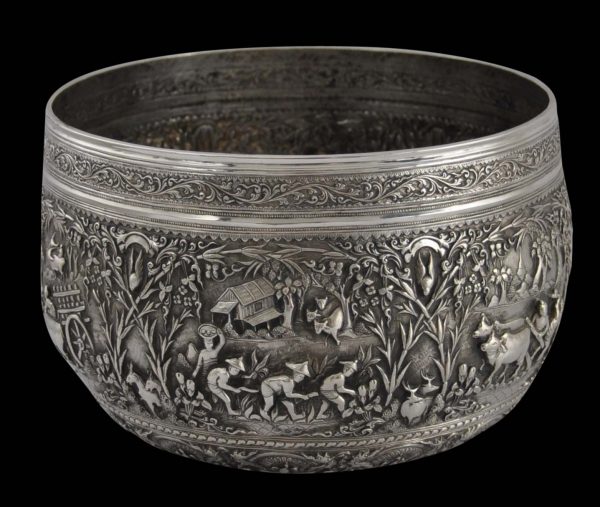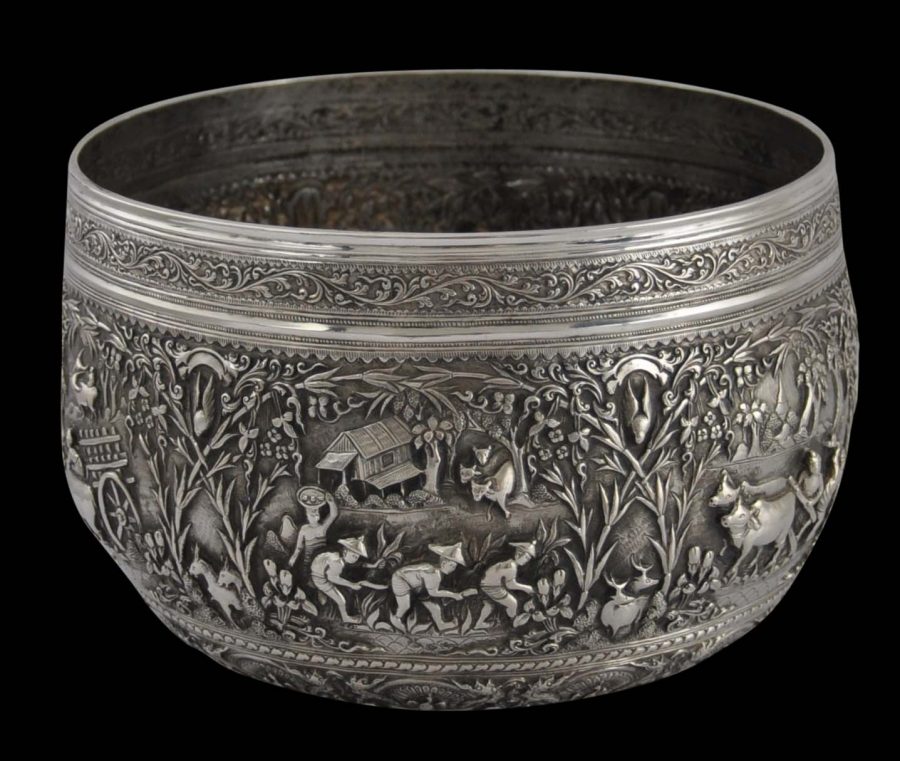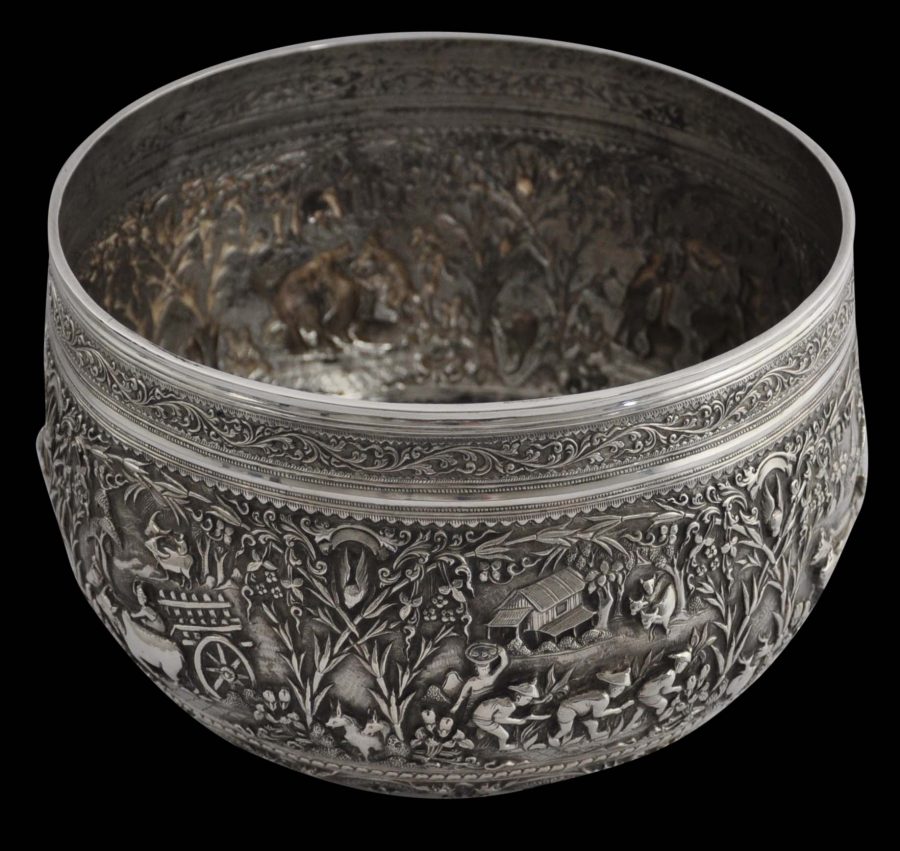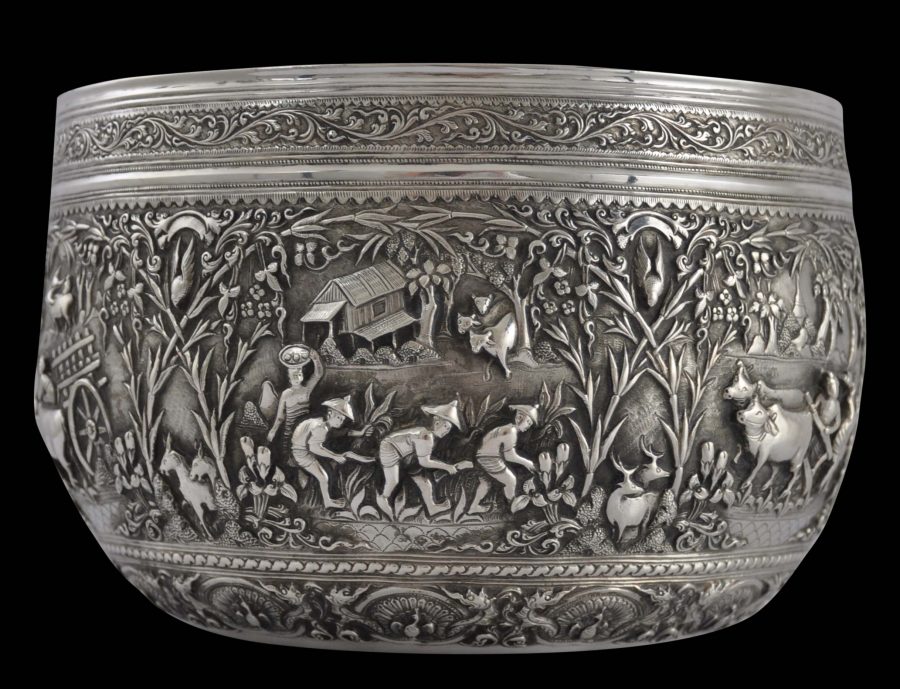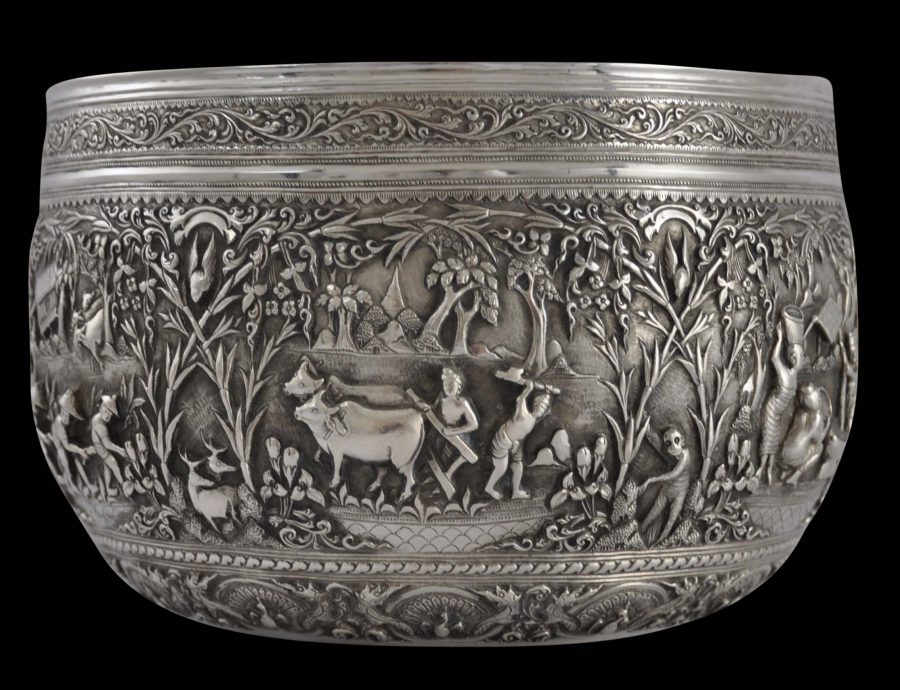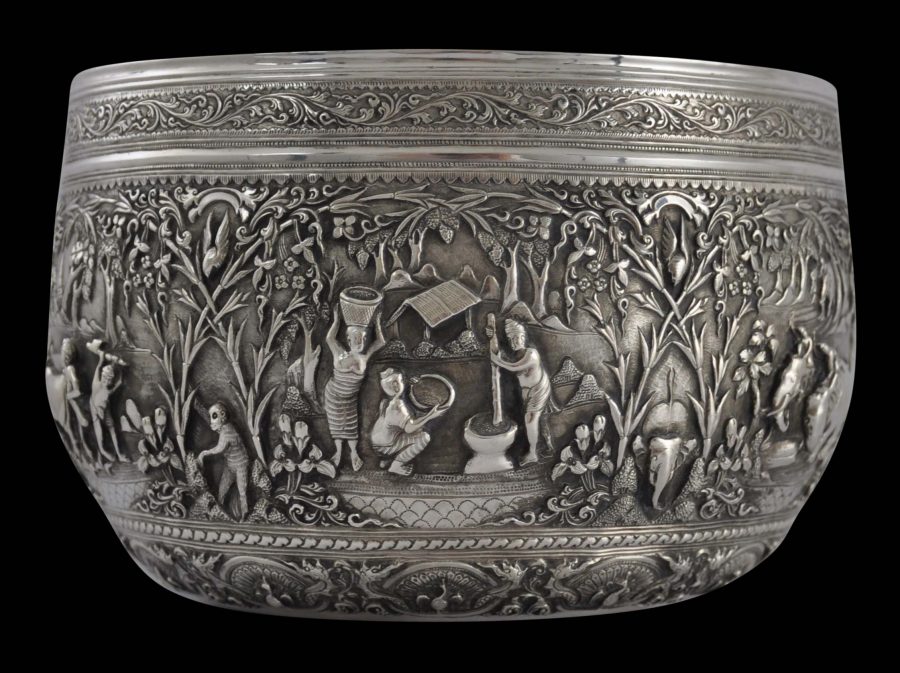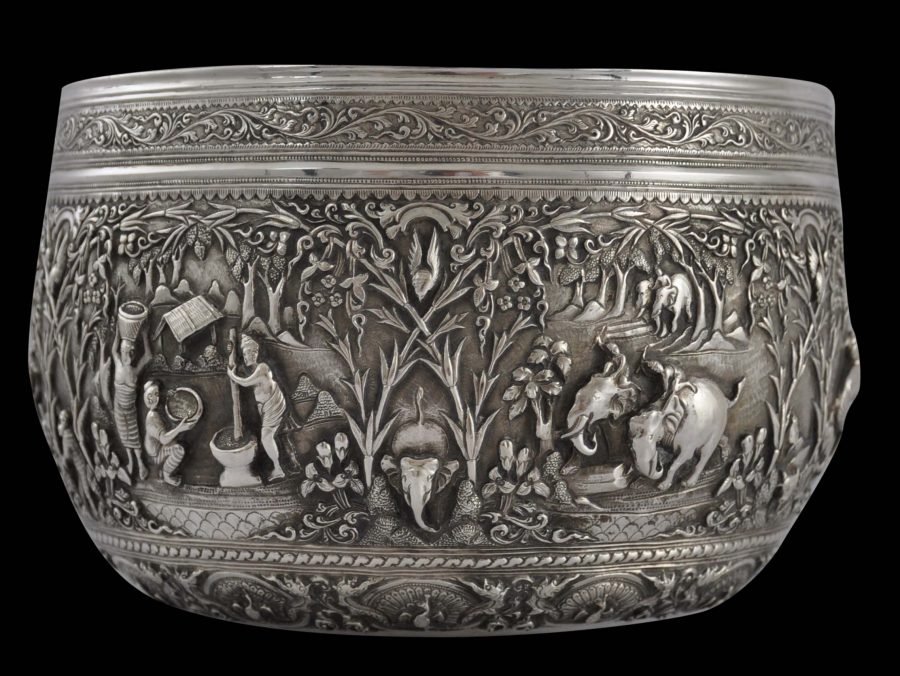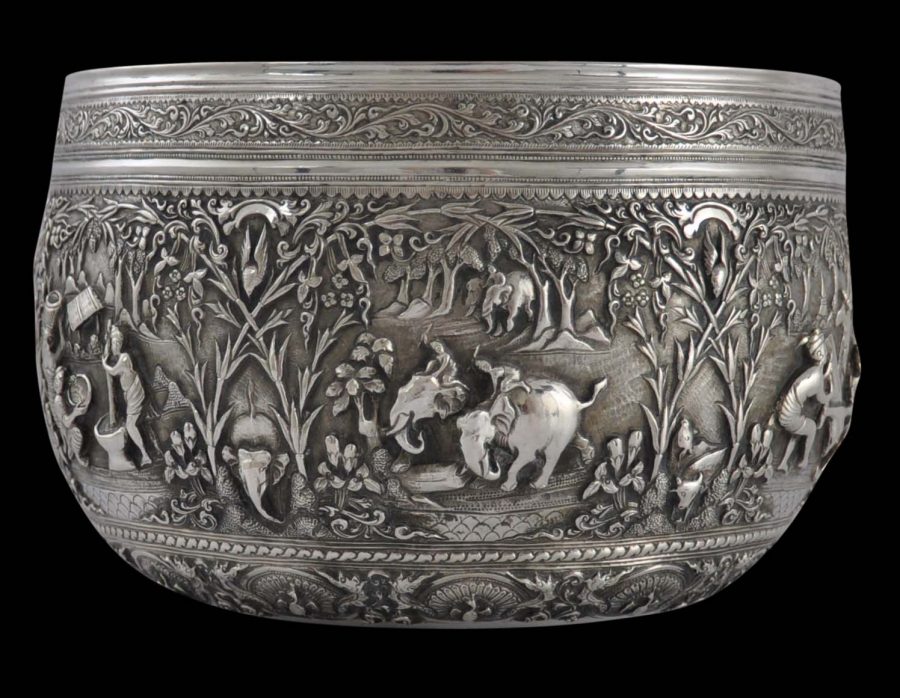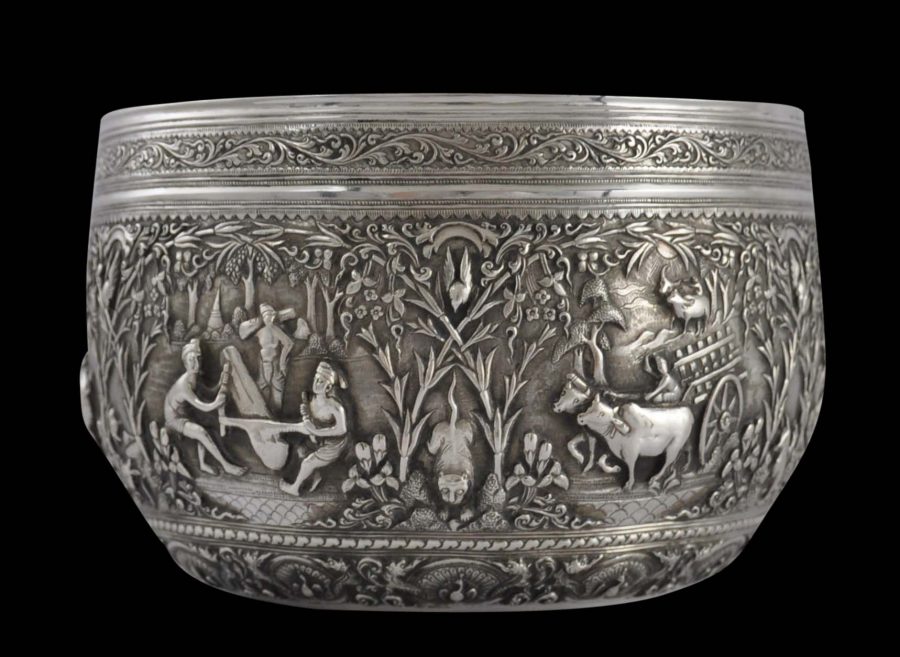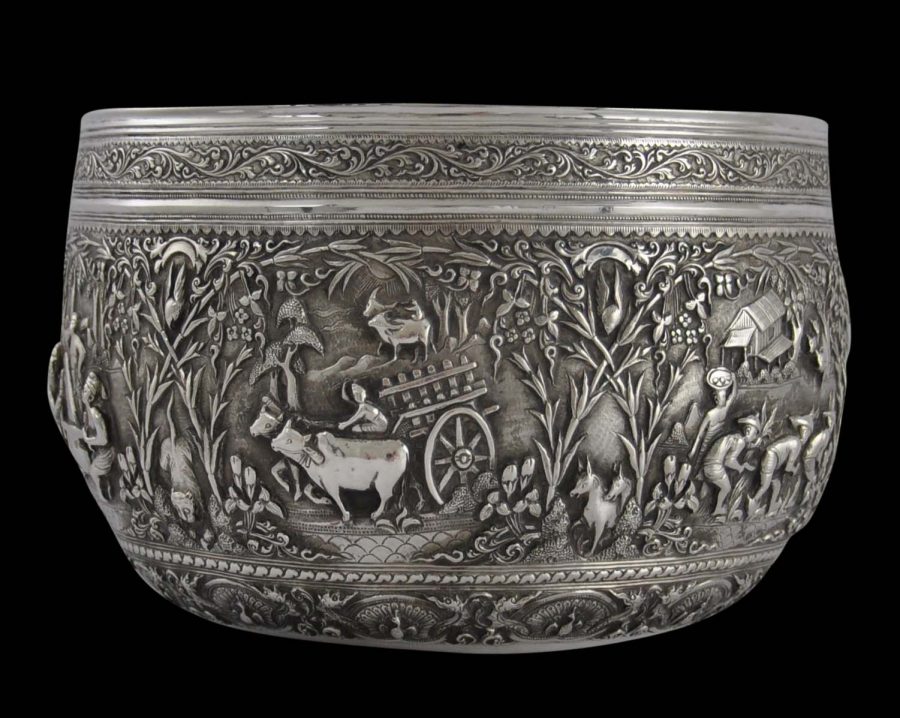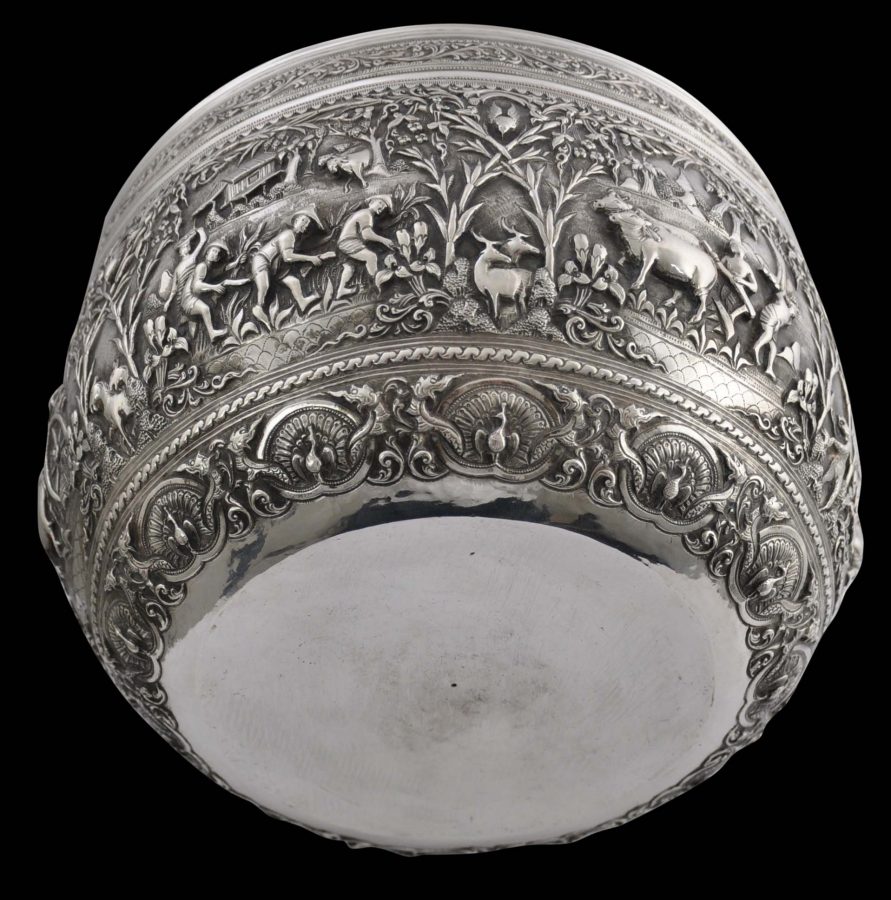This fine Burmese silver bowl is repoussed with intricate scenes of Burmese village life, interspersed with interlaced thickets of bamboo. Small birds decorate the upper sections of the bamboo, and large animals peak out from the lower sections. Some of the ways in which these larger animals are rendered is unusual and innovative – an elephant is shown head on for example, almost as if it is charging out of the bowl at the viewer.
The upper border comprises a chased band of fine foliage scrollwork.
The lower border is wide and is particularly interesting being chased with male peacocks with tail feathers fully fanned out and separated by pairs of addorsed Burmese naga figures with elaborate foliate tails.
The base is flat and of plain, hammered silver.
The shape of such bowls is based on the monk’s begging bowl, although ironically, Burmese monks are prohibited from touching gold or silver. Accordingly, Burmese silversmiths did not use their skills on religious objects unlike silversmiths in other Buddhist lands such as Tibet or Sri Lanka.
Overall, this bowl is an unusual and fine example of a colonial Burmese bowl. It was acquired in the UK and most probably has been in the UK since the colonial era. It is without dents, splits or repairs. Some of the detailing shows slight wear from polishing over the years.
References
Fraser-Lu, S., Silverware of South-East Asia, Oxford University Press, 1989.
Fraser-Lu, S., Burmese Crafts: Past and Present, Oxford University Press, 1994.
Tilly, H.L., The Silverwork of Burma (with Photographs by P. Klier), The Superintendent, Government Printing, 1902.
Tilly, H.L., Modern Burmese Silverwork (with Photographs by P. Klier), The Superintendent, Government Printing, 1904.


